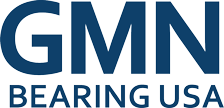The quickest way to estimate a bearing’s lifespan and performance is by knowing all about the application load that will be placed on the bearing.
Engineers should think about bearing loads when designing a new application, tweaking an existing application, and especially after a bearing failure or malfunction.
A bearing load is defined as the force that’s transferred from one bearing ring, through some or all the rolling elements, to the other bearing ring.
Application loads generally transfer to the shaft and then to the bearing’s inner ring, then, to the outer ring.
A bearing supports many different load combinations but most types of application loads can be boiled down to these four main groups:
- Radial Loads
- Axial Loads
- Preloads
- Centrifugal Loads
This article will discuss these four types of application loads, how it affects the bearing and what bearing to choose that will best support the application load.
Bearing Radial Load
Bearing radial loads are forces that are perpendicular to the axis of the shaft, parallel to the bearing’s radius.
Some examples of a radial load on a bearing are the weight of a horizontal shaft assembly, gears, pullies or cutting tools.
When in operation, the shaft assembly pushes radially on the inner ring of the bearing transferring a load through the rolling elements to the outer ring.
Radial loads don’t transfer force in an equal and uniform way onto the rolling elements.
Typically, you’ll see the distribution of force shaped like a bell curve.
The rolling element directly under the application load is usually the one that’s receiving the most force. Then each successive rolling element, in both directions, transfers less and less load to the other.
If your application will place a radial load on the bearing, then either a radial ball bearing or an angular contact bearing with a low contact angle will be a good bearing choice.
Bearing Axial Load
A bearing axial load is a force that acts parallel to the axis of the shaft, sometimes referred to as a thrust load.
Usually, you’ll find an axial load directly in line with the shaft, like a drill. Other times an axial load can be a reactive load offset from the shaft axis, like a bevel gear.
Axial loads transfer force in an equal, uniform way onto the rolling elements thereby creating a balanced load distribution.
Typically, you’ll see an equal distribution of forces on each ball. Because the balls contact the raceways at an angle the resultant forces will radiate outward and in line with the bearing axis.
If your application will place an axial load on the bearing, then an angular contact bearing with a higher contact angle around 25° will be a good bearing choice.
Just to add some complexity to this, axial loads that are offset from the center of the axis, like a bevel gear, have a “moment force” applied to the inner race. When a moment force is applied, the load distribution on the bearing’s rolling elements isn’t as uniform.
Bearing Preload
One special type of bearing axial load (or thrust load) is called preload.
Bearing preload is a predetermined load that is applied to a bearing and is separate from application loads. Adding a preload establishes an optimal synergy between the rolling elements and the bearing races.
Benefits of a bearing preload:
- Protects from excessive skidding
- Increases rigidity, decreases vibration and sliding friction
- High running accuracy – even if load conditions keep changing
- Increases load capacity
Generally speaking, if you are designing a high-speed application consider using a light preload on your angular contact bearing. We recommend our SM angular contact bearings or KH angular contact bearings.
On the other hand, if you are designing an application that needs tight rigidity and precision then you may want to consider a medium or heavy preload on your angular contact bearing. We recommend our S angular contact bearing series.
To dive deeper into bearing preload, we recommend reading our article “Ball Bearing Preload.”
Bearing Centrifugal Loads
Centrifugal loads come from the rotational speed (RPMs) of an application. High-speed applications can produce a powerful centrifugal load which can sometimes be the reason for the max speed of an application.
Centrifugal force is the apparent force that is felt by an object moving in a curved path that acts outwardly away from the center of rotation.
In a rotating bearing, the interaction between the rolling elements and the outer ring produce a centrifugal radial load, here’s how:
- The inner ring rotates the rolling elements
- The rolling elements, following the motion, want to continue straight along the path tangential to the arc of rotation
- The outer ring must force the rolling elements to continue along the circular arc of the bearing
Select a Bearing That Supports Your Centrifugal Loads
Centrifugal loads are important in bearing selection because of the effect they have on bearing life.
If an application requires high speeds, consider using an angular contact bearing with smaller balls, like our KH series.
Another option is to switch from bearing steel balls to ceramic balls. All our GMN angular contact bearings and radial ball bearings are available with ceramic balls.
The smaller and/or lighter balls reduce rotational mass and therefore reduce the centrifugal load of the application.
So far, all the loads we’ve discussed are from a contact force that is transferred from one bearing ring to the other bearing ring through the rolling elements.
But what we haven’t mentioned is that this contact force creates pressure where the rolling element is pushing on the raceway; this is called Hertzian contact pressure or Hertzian stress.
The Hertzian contact pressure is an important value in finding out how much and what type of load a bearing can handle.
A bearing’s ability to withstand a load is determined by how close the Hertzian contact pressure is to the stress limit of the bearing. The closer it is to the bearing’s stress limit, the less time it will take for the bearing to experience plastic deformation.
For steel AISI 52100 ball bearings, the stress limit is generally accepted to be 4,200 MPa. GMN considers Hertzian contact pressures above 1,500 MPa for steel balls and 1,800 MPa for ceramic balls to be close enough to the stress limit to have a significant impact on the overall life of the application.
If the application has high Hertzian pressure, then changes may need to be made to the application to reduce the pressure.
A few solutions could be changing the bearing size, using ceramic balls, or adding more bearings to the system to help divide up the loads.
Summary: Bearing Load Types
We hope you found this article helpful. If you’d like further information on bearing loads, our on-site engineers would love to discuss it with you. Fill out our contact form or give us a call at 281.858.7000.
 Angular Contact Ball Bearings
Angular Contact Ball Bearings
 Radial Ball Bearings
Radial Ball Bearings
 Other Bearing Brands
Other Bearing Brands
 Complete Sprag Clutch Units
Complete Sprag Clutch Units
 Ball Bearing Sprag Clutch Units
Ball Bearing Sprag Clutch Units
 Sprag Clutch Elements (400 Series)
Sprag Clutch Elements (400 Series)
 No RPM Limit FE 8000 Series
No RPM Limit FE 8000 Series
 Backstopping Clutch with Mounting Tab
Backstopping Clutch with Mounting Tab
 Roller Ramp Clutches
Roller Ramp Clutches
 CF Seals
CF Seals
 L Seals
L Seals
 M Seals
M Seals
 S Seals (Gap Seals)
S Seals (Gap Seals)








